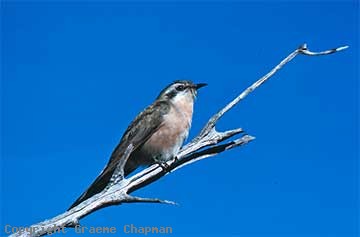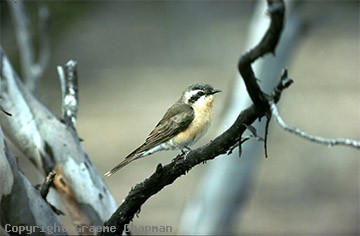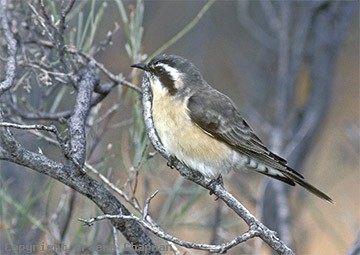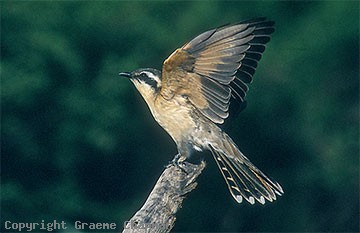
Black-eared Cuckoos occur over much of Australia but are more often seen in the drier shrublands and woodlands of the southern inland, their occurrence largely dictated by the ranges of the principal hosts, the Speckled Warbler and the closely related Redthroat. From a survey of 163 nest and other records, 49.1% of hosts were Speckled Warblers and 25.2% were Redthroats. Both of these species lay dark-coloured eggs similar to those of the Black-eared Cuckoo. (see my pics #504204 and #497203 under Speckled Warbler and Redthroat)
Black-eared Cuckoos are regarded as uncommon by many people but this is because their calls are soft and easily overlooked (listen on sound page) and they are fairly shy and tend to fly away low through the undergrowth when disturbed. However, if you mimic their soft whistling calls they will come in readily and perch in full view.
Technically, they are one of the Bronze-Cuckoos but distinctive enough not to be confused with any of the others.
One of their calls is similar to a call given by Horsfield's Bronze-Cuckoo.
It is unusual to see more than one Black-eared Cuckoo at a time - when pairs do occur together, they can call quite excitedly and some displays have been seen but so infrequently, the exact significance is not clear. (see pic#341204) I have seen courtship feeding - one Black-eared Cuckoo feeding another but because the sexes look alike you have to assume it was male feeding female because that is the norm.
In southern Australia, they are generally regarded as being migratory but they do pop up in all sorts of places, no doubt either on migration or in response to ideal environmental conditions. Like most of our cuckoos, caterpillars figure largely in the diet. They are known to migrate as far afield as New Guinea and the Lesser Sundas and Moluccas.









